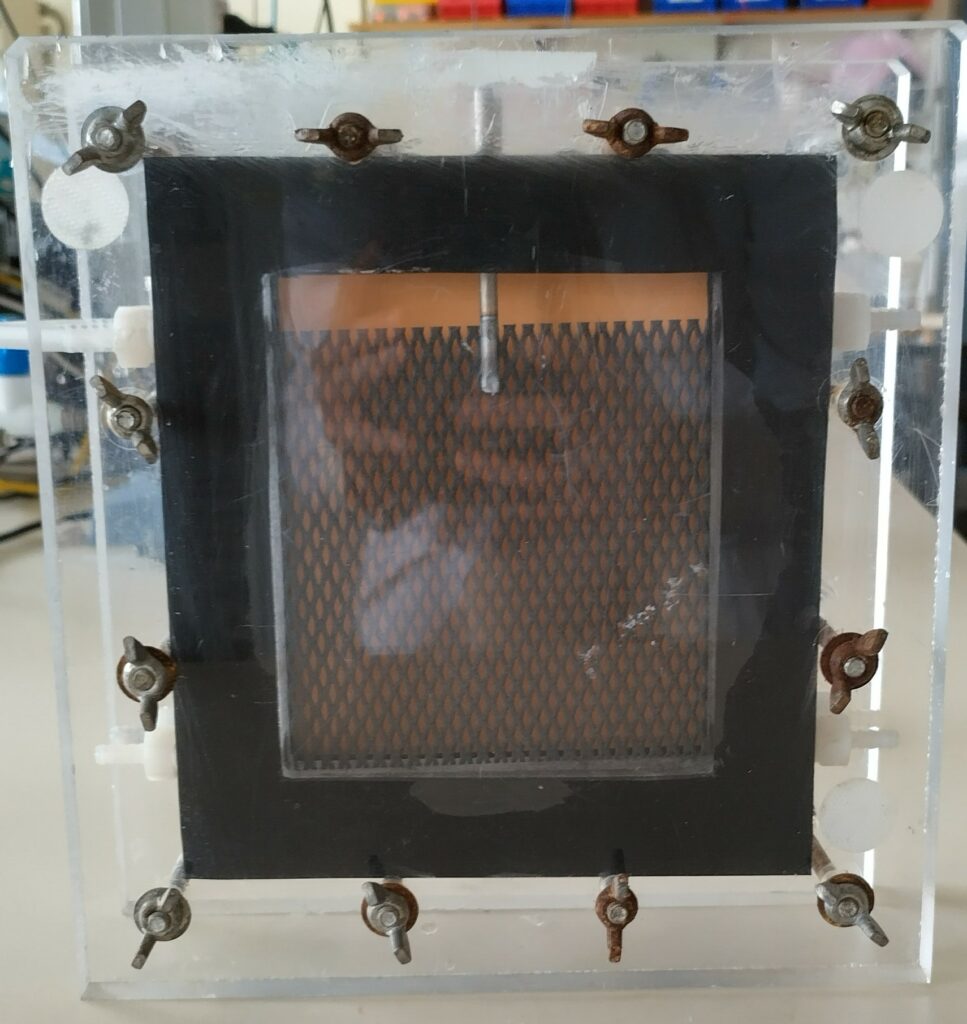Bioelectrochemical stimulation for the degrading of PFAS in the environment.
Applying bioelectrochemical systems to encourage microbes to biodegrade PFAS in the environment.
The Challenge
Per- and polyfluoroalkyl substances (PFAS) have been manufactured for various applications for many decades, including fire-fighting foams, plastics, cookware, and cosmetics (Evich et al. 2022; Aus. Gov., 2023). The widespread application of PFAS-containing products has resulted in the contamination of environments globally (e.g. airports, chemical plants, fire departments, military storage). The long-term persistence and potential human and environmental health impacts of PFAS creates a significant problem of contamination for present and future generations. There are several management options to remediate an environment contaminated with PFAS. For example, activated charcoal is often used to absorb and concentrate PFAS but has had limited success in soils. Further, activated charcoal does not degrade PFAS and still needs to be managed, either by storage or incineration (energy intensive and produces toxic gases). As PFAS contamination is incredibly pervasive, ubiquitous and present in low concentrations globally (e.g. background concentrations in soil range from 10 to 60 pg/g (Washington et al., 2019)), the challenge lies in developing cost-effective technology capable of remediating at such a large scale.
CSIRO is using microbes to clean up industrial contaminants in the environment in a process called bioremediation that utilises the capability of microbes to degrade contaminants. Biodegradation of PFAS is unlikely to occur naturally due to the multiple carbon-fluorine (C-F) bonds these chemicals possess within their chemical structure. The C–F bond is one of the strongest covalent bond in organic chemistry (Kissa, E., 2001). Additionally, there are very few naturally occurring compounds that have this bond, and only few microorganisms have been identified with the ability to break the C-F bond down (Wackett, L., 2021). Increasing research has shown that while bioremediation of PFAS is possible, it is generally a slow process with limited results.
Our response

Side on view of a bioelectrochemical system (BES) similar to the one to be used in this study
The use of electrochemical biostimulation has been successfully used as a management intervention to biodegrade other persistent contaminants in the environment. In electrochemical biostimulation, microorganisms and contaminants are placed in a battery-like apparatus called a bioelectrochemical system (BES). Microbes use solid electrodes as either electron donors or acceptors to facilitate the biological oxidation or reduction of contaminants (Cheng et al. 2019). As such, the biodegradation of a contaminant can be promoted and may be measurable as an electrical current (Ruiz-Uriguen et al. 2022). This approach has already been applied to dechlorinate perchloroethene in petroleum-contaminated groundwater (Lohner & Tiehm, 2009). However, research is required to determine the feasibility of applying electrochemical stimulation to promote microbial PFAS degradation.
In this study, we will assess and optimise an electrochemical biostimulation methodology using environmental microbiomes to degrade PFAS in contaminated waters. Microbiomes suitable for defluorination of PFAS may be identified in this complimentary study (designer microbiomes for bioremediation of PFAS), and deployed in lab-scale BES systems to explore their potential in degrading PFAS in selected environmental samples. Once the microbiome and the reaction conditions are optimised, a modular BES system will be developed for on-site application to treat contaminated surface water and groundwater.
The team
Ms Lara Oppermann PhD student
Dr Falko Mathes Research scientist
Dr Ka Yu Cheng Senior Research Scientist
Dr Anna Kaksonen Group leader
Dr Jason Kirby Group leader
Dr Sasha Jenkins (University of Western Australia)
